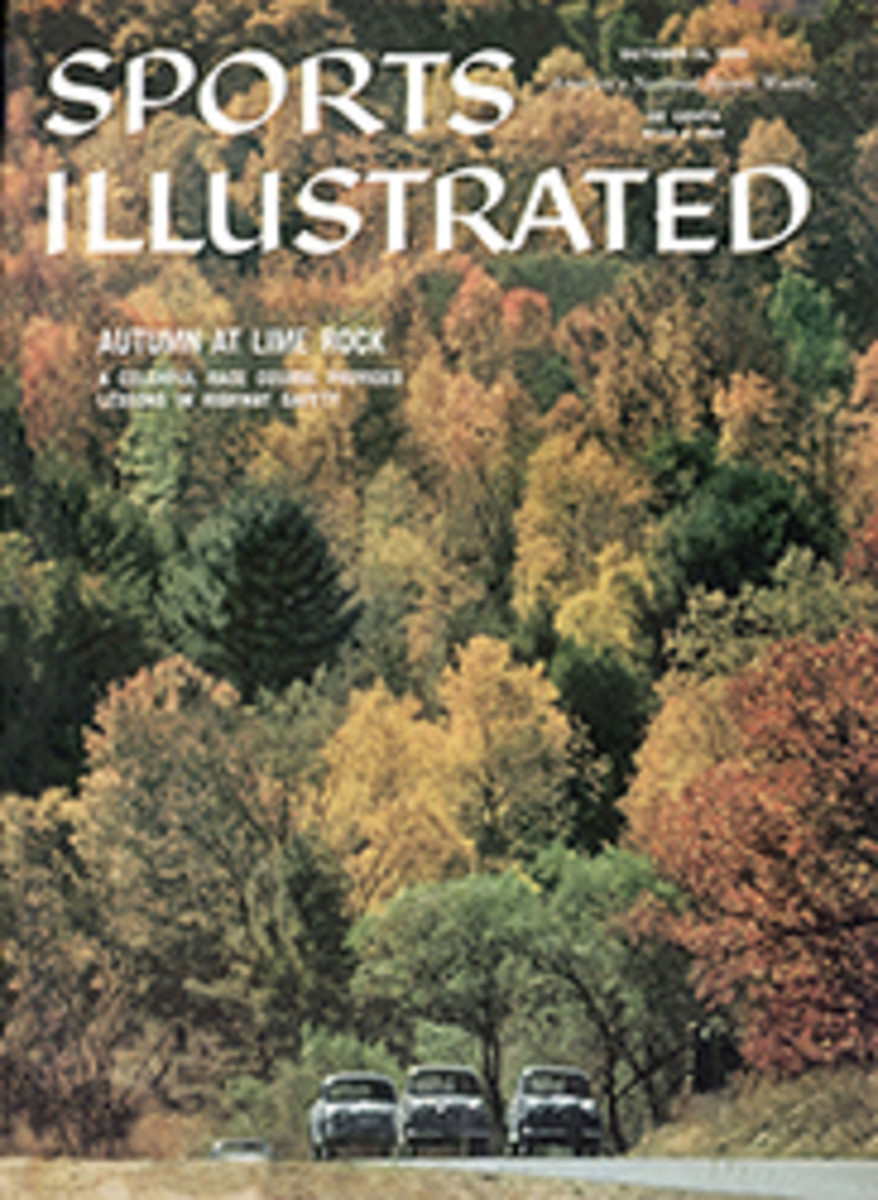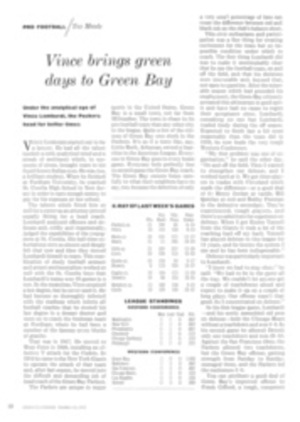
You have some rights under the rules, too
The mail brings a number of odd questions about the Rules of Golf to the United States Golf Association's headquarters in Golf House, New York. This unusual one came in recently:
"We have lots of rainy days, but we hold our tournaments regardless of the weather. When playing on a rainy and wet course, is it legal for a player to go barefooted?"
The writer was not Sam Snead or Dynamite Goodloe. His name is Al Kobata, and he lives in Hawaii.
Can there be more to the question than the question itself? Does it imply that many golfers have a rather fearful view of the Rules of Golf? Do they think the code is a jumble of don'ts and can'ts and prohibitions and technicalities?
Sadly enough, this is a fairly common estimate of the Rules. But there is another side, a positive side. The Rules carry many legitimate, sporting advantages for the knowing golfer. In a cursory exploration of the Rules book recently I found more than 75 examples of rights, of positive privileges, as distinguished from negative can't-do-thats.
Suppose you get one safely off the tee right down the middle of the fairway. But the night before some young hot rodders had taken their souped-up auto on that fairway and tested its brakes. Your drive comes to rest in a deeply rutted bare patch, made overnight, right in the fairway, and the ball is practically unplayable. Are you stuck with your lie?
In a tournament you could appeal to the committee to declare the rutted area to be ground under repair. Ideally, ground under repair should be marked in advance; but here is an emergency case. The definition of ground under repair covers it: it is any portion of the course so marked by the committee or "so declared by its authorized representative." A referee or a committee may classify serious fresh damage to the course as ground under repair. But note that an official must make the decision; if every player decided it for himself, things could be chaotic.
A commonplace but important point about rights in the Rules, concerning the five-minute time limit on looking for a lost ball, was made during the fourth round of the 1956 Amateur championship at Knollwood, near Chicago. Here Arnold Blum and Charlie Harrison were all even after 17 holes. On the 18th Blum knocked his tee shot into the rough. After a lengthy search Arnold announced that he was ready to give up looking for the ball, but Clarence W. Benedict, a USGA official who had been timing the search, informed him that he still had 45 seconds left. The ball was found by a spectator a few seconds later, and Blum subsequently won the match, reached the quarterfinals and was named to the 1957 Walker Cup team.
You can't always rely on officials to be as efficient as Mr. Benedict was. In point of fact, sometimes you have to know the Rules just to protect yourself from officials.
Arnold Palmer's knowledge of his rights was a key point in his victory in the Masters tournament at the Augusta National last year.
Wet conditions in the final round brought about a local rule allowing a free lift for a ball embedded "through the green"—which means the whole course except teeing ground and putting green of the hole being played and all hazards on the course.
Playing the 12th hole, a par 3, Palmer's tee shot became embedded in a mound above the green. Since it was "through the green," Palmer knew that he was entitled to a free lift. A nearby committeeman, however, thought the special permission to lift an embedded ball applied in the fairway only.
Palmer quite properly decided to invoke another Rule which applies in stroke play only, not match play, a Rule (11:5) which enables a player, when there is doubt about his rights or procedures, to play two balls and keep going so as to be sure to have a legal score: he may play out the hole with the ball as it lies and, at the same time, complete the hole with a second ball, provided he announces to his marker which ball he wants to score with if the Rules permit.
Palmer played his ball as it lay, and took 5 on the par-3 hole. Then, under the temporary rule for an embedded ball, he played another ball near the place where the first one had lain and scored 3. He immediately submitted the case to the tournament committee.
When Palmer was playing the 15th hole he was told that the committee had decided he had been within his rights and that his 3 had been accepted as his score for the 12th hole.
Here was a difference of two strokes—a 3 or a 5. Palmer won the Masters by one stroke over Doug Ford and Fred Hawkins.
In the 1954 Masters Billy Joe Patton showed his knowledge of the applicable Rule when, on the sixth hole, he hit his ball against the flagstick. He very gingerly removed the stick, and the ball fell into the hole for a dramatic hole in one at a crucial point during the final round. Had he yanked the stick out so quickly that the ball failed to drop in, it would have simply lain one outside the hole.
Another Masters tournament several years ago was the occasion for an unusual sequence of rulings involving Julius Boros.
On the 13th hole Boros faded his second shot into a brook at the right of the green. His ball lay in the water hazard in about an inch of water, in an almost impossible cuppy position. Running across the hazard was a metal water pipe which would have interfered with Boros' backswing if he had tried to make a stroke. He probably could not have played a successful stroke even if the pipe had not been there, but no matter—the Rules entitled him to relief from the pipe, which was artificial and therefore technically known as an obstruction for Rules purposes. Even though the ball lay in a hazard, he had the right to seek such relief as he could get from the pipe.
As luck would have it, there was a flat little patch of grass near by in the water hazard, and it was within two club lengths of the nearest point of the obstruction. Boros asked an official whether he might drop the ball (which is done, of course, by simply dropping the ball over one's shoulder behind one's back) on the grass in the hazard. He was assured that it would be proper to do so.
"But what if the ball rolls into the water and becomes unplayable?" Boros wanted to know. "Where would I drop outside the hazard for a stroke penalty?" The official told him that he then could invoke the water hazard Rule and drop a ball outside the hazard, under a stroke penalty.
In other words, the free lift away from the pipe was merely an extension—the completion—of the second shot which originally sent the ball into the hazard. Boros did not have to decide whether to invoke the water hazard Rule and take its one-stroke penalty until he had seen the result of the free drop ensuing from the second shot.
So he dropped the ball successfully on the patch of grass within the water hazard, and got a playable lie as well as relief from the pipe.
But that was not all. When the ball fell, it came to rest against his heel. Question then arose whether there would be a penalty if the ball should move as Boros took his foot away. Julius stood still until the official ruled that there would be no penalty. Today you'll find this point spelled out in the Rules as a result of this case.
Boros played the ball successfully out of the hazard in 3.
The Rule about obstruction is not fully appreciated by many golfers. The first thing to know is what an obstruction is. It is anything artificial, whether erected, placed or left on the course, but not including stakes and fences defining out of bounds, and artificial roads and paths. Note the distinction between obstructions and loose impediments: loose impediments are natural objects not fixed or growing, such as pebbles, loose twigs and leaves, whereas obstructions are artificial, man-made objects, such as paper, tin cans, water hydrants and ball washers.
An incident involving an unusual type of obstruction occurred in an English country championship, 36 holes at stroke play. A golfer's ball came to rest in the heather touching a skylark's nest containing four young birds. The ball was in a good lie, but rather than hit the ball and destroy both nest and birds the player, under the watchful eyes of a fellow competitor, dropped back of the nest and played his ball from there. The case went to the Royal and Ancient Golf Club for a ruling and the Rules Committee declared, in a mood of sporting generosity, that the nest could be considered an immovable obstruction (Rule 31:2). The golfer's action was therefore upheld without penalty.
The principle of playing the ball as it lies is the fundamental Rule of Golf. But sometimes it can be overdone. Consider the case of Peter Wilding last spring at Scarborough, England.
Mr. Wilding swung at a ball in the rough, and it hopped into his trousers' cuff.
Mr. Wilding consulted his partner, who said the Rules were plain—play the ball as it lies.
Mr. Wilding took a mighty swipe. The ball flew clear, but he let out a yell of agony and hobbled off the course looking for a doctor to treat a chipped bone in his leg.
Let's ignore the fact that when Mr. Wilding stopped his own ball in his trousers' cuff he was subject to penalty of loss of hole in match play or two strokes in stroke play (Rule 26). Let's overlook, too, the fact that in stroke play he was obliged to drop the ball out of his clothes without further penalty. Let's just remember Peter Wilding as a man who plays the ball as it lies, come what may.
Mr. Wilding's case is helpful in emphasizing one of the three tenets on which all Rules are founded. The three are:
1) Play the course as we find it.
2) Play the ball as it lies.
3) Play fair.
The Rules are admittedly more complex than that. They have to cover a lot of territory in order to insure that everybody plays the same game, for no two courses are alike and a normal playing area covers about 125 acres. Yes, the Rules are complex, but if we try to apply common sense to them they boil down to:
1) Play the course as we find it.
2) Play the ball as it lies.
3) Play fair.
Of course, golfers who make a habit of carrying a Rules book and of consulting it as situations arise during play are often surprised to find how many rights and privileges they have. In time they come to find that, for the real lover of golf, the code of playing Rules is a good friend that confers many favors. But, like any other friend, we have to know him well to appreciate him best.
And as for Al Kobata of Hawaii, yes, it is legal under the Rules to play golf barefooted.
PHOTO
AUTHOR JOE DEY, executive director of the U.S. Golf Association and a relentless enforcer of the rules of golf, is a weekend player of no small skill himself.
PHOTO
KEEN KNOWLEDGE OF GOLF RULES GAVE ARNOLD PALMER VICTORY IN 1958 MASTERS
PHOTO
HAPPY KISS is given by Billy Joe Patton to ball rules helped to hole in one.

